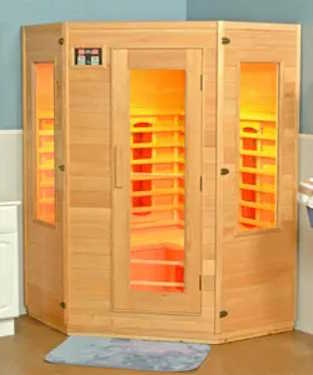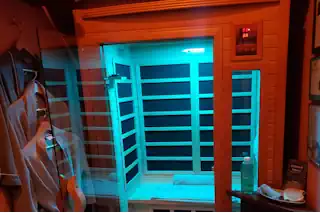Exploring Different Types of Saunas: A Comprehensive Guide
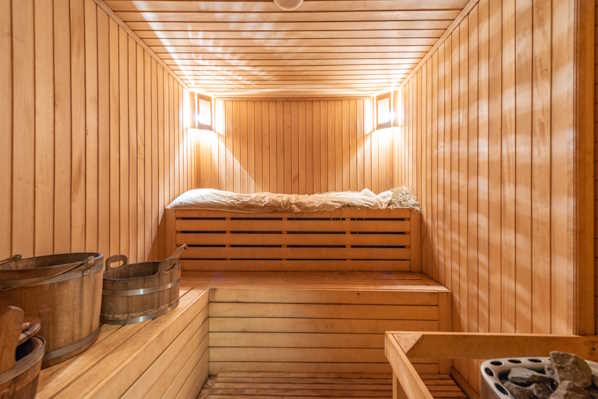
Saunas have been synonymous with relaxation and wellness for centuries, and the practice of using these hot, steamy environments as part of a health regimen continues to gain popularity. Whether you’re a seasoned spa-goer or an at-home wellness enthusiast, understanding the various types of saunas available can help you tailor your experience to your personal needs and preferences. In this guide, we will walk you through the different types of saunas and help you decide which one is right for you.
Types of Saunas
- Traditional Finnish Sauna: Often characterized by their wood-lined walls and benches, Traditional Finnish Saunas use a heater to warm up rocks, which in turn radiate heat to the surrounding air. Users can sprinkle water on the rocks to increase humidity and enhance the sensation of heat.
- Infrared Sauna: Unlike the traditional sauna, an Infrared Sauna uses infrared heaters to emit radiant heat, which is directly absorbed by the body. This type of sauna operates at lower temperatures but can still induce a deep sweat.
- Steam Room (Turkish Bath): While technically not a sauna, Steam Rooms are closely related and provide a high-humidity environment filled with steam, offering a wetter and cooler alternative to the dry heat of traditional saunas.
- Smoke Sauna (Savusauna): An ancient Finnish variant with no chimney, the room fills with smoke during the heating process, which is then vented out leaving behind a distinctive aroma and a soft heat.
- Electric Sauna: An increasingly popular type in modern homes and fitness centers, Electric Saunas use an electric heater fixed to the wall or floor. These are easier to maintain and can quickly reach the desired temperature.
- Wood Burning Sauna: This traditional heating method uses a wood stove and is often preferred for the natural and gentle heat it provides. It requires more effort to maintain but remains favored for its authentic experience.
Understanding the distinct features and benefits of each sauna type can influence your decision, depending on whether you prioritize convenience, tradition, intensity of heat, or the specific health benefits you wish to obtain.
Traditional Saunas: The Classic Heat Experience
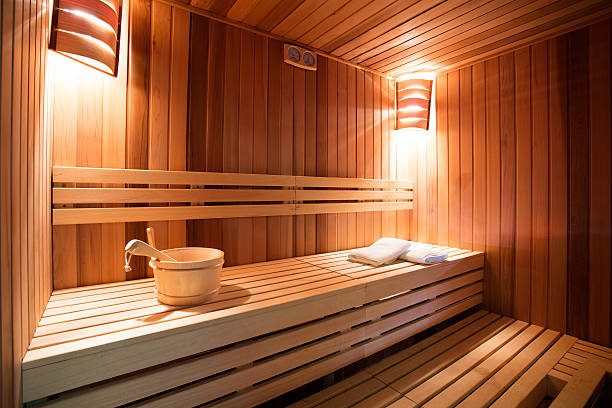
Traditional Sauna
The traditional sauna, often referred to as a Finnish sauna, is what many of us picture when we think of a sauna experience. Here, the air is typically heated to temperatures between 160°F and 190°F, with low humidity, creating a dry heat that causes profuse sweating.
Benefits of Traditional Saunas
The benefits of traditional saunas are well-documented, including improved circulation, relaxation, and enhanced skin health. Regular use has been associated with reduced stress levels and improved cardiovascular function.
Popular Models and Construction Materials
You can find traditional saunas in various models, from small, portable ones to large, commercial-grade installations. When it comes to construction, you can choose from cedar, hemlock, or other types of wood known for their heat-retaining properties and resistance to decay.
Infrared Saunas: A Modern Take on Thermal Therapy
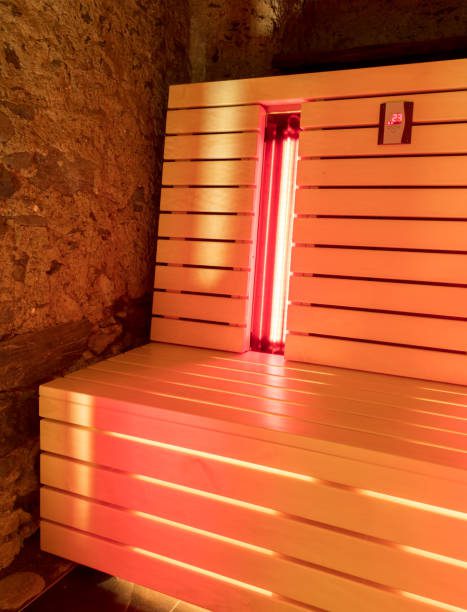
Infrared saunas use infrared heaters to emit radiant heat which is absorbed directly into the body, instead of heating the air like traditional saunas. They operate at a lower temperature, usually between 120°F and 140°F, making them more tolerable for individuals who may not enjoy the intense heat of a traditional sauna.
Benefits of Infrared Saunas
Infrared saunas tout the same benefits as traditional saunas, with some added advantages such as improved detoxification and lower energy consumption. They are also believed to be more efficient at promoting relaxation and reducing pain due to the way the heat is absorbed by the body.
Comparison with Traditional Saunas
While there’s a great deal of overlap in the benefits, infrared saunas are often considered a better option for those who are more sensitive to heat. Traditional saunas still have the stronghold on the ‘authentic’ sauna experience for many.
Steam Rooms: The Wet Heat Alternative

Saunas, steam saunas and steam rooms are often confused for one another, but they do provide a different experience. Steam rooms, also known as Turkish baths, operate at lower temperatures than saunas, typically between 110°F and 120°F, but with much higher humidity levels, often reaching 100%.
Features and Benefits
Steam saunas are fantastic for the skin, as the high humidity opens up pores and promotes the removal of toxins. They are also a popular choice for those suffering from respiratory conditions, as the moist heat can offer relief from congestion and help to open up airways.
Distinctions from Saunas
The main distinction is the type of heat: dry in saunas and wet in steam rooms. This results in a different sensation and, for some users, a preference for the breathing-friendly atmosphere of a steam room over the drier, sometimes hotter, environment of a dry sauna.
Smoke Saunas: The Authentic Finnish Tradition
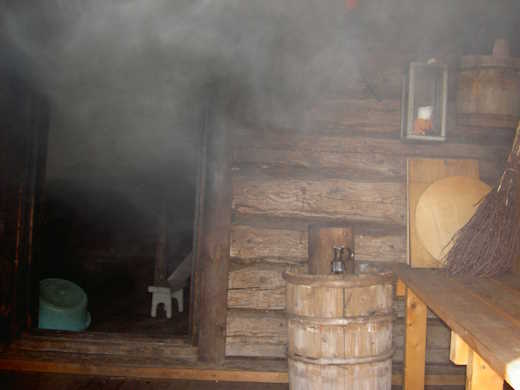
Smoke saunas, known as Savusaunas in Finland, offer an authentic experience that dates back hundreds of years. These are the most traditional type of Finnish sauna, with a room that heats up through a wood-burning stove lacking a chimney. Instead of escaping through a chimney, the smoke fills the room, imparting a unique character to the sauna with a subtle aroma of burnt wood.
Historical Context and Modern Resurgence
Originally, smoke saunas were the only kind of sauna available and were used for both hygienic and spiritual purposes. Despite their decline due to the convenience of electric and wood stove saunas with chimneys, there has been a resurgence of interest in smoke saunas for their unique and gentle heat, as well as the deeply relaxing atmosphere they provide.
How Smoke Saunas Operate
The process of heating a smoke sauna is time-consuming and labor-intensive. Fires are kept burning for several hours to heat the massive stone stove and the surrounding structure. When the desired temperature is achieved and the smoke is ventilated, the residual heat from the stones continues to warm the sauna for the duration of its use.
Special Considerations and Benefits
Users of smoke saunas often describe an unparalleled depth to the heat and a soft warmth that is less aggressive than that of saunas with electric or continuous wood-burning stoves. The smoke is also thought to have antiseptic properties, contributing to the sauna’s health benefits and enhancing the user’s overall wellness experience.
Electric Saunas: The Modern Convenience
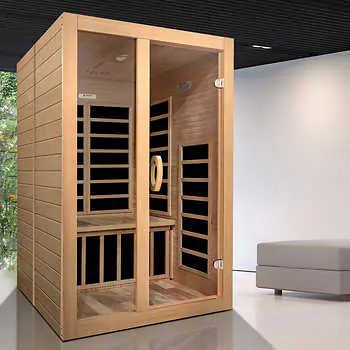
Electric saunas bring a level of ease and convenience to the traditional sauna experience that is hard to match. With the push of a button, users can quickly heat their own sauna room to the desired temperature, making these models particularly suitable for those with busy lifestyles.
Advantages of Electric Saunas
Electric saunas are celebrated for their ease of use and precise temperature control. They require no time-consuming preparations such as chopping wood or extensive cleaning after use. Additionally, electric saunas are often compact, making them an ideal choice for indoor use in homes or apartments where space may be limited.
Installation and Maintenance
Installing an electric sauna is relatively straightforward, with the main requirement being access to an appropriate electrical outlet or hardwired setup. Maintenance involves a simple cleaning routine and occasional checks on the heating elements and electrical connections to ensure safety and longevity.
Health and Wellness Features
Much like other sauna types, electric saunas offer substantial health benefits including muscle relaxation, improved circulation, and detoxification through sweating. They also allow users to indulge in the sauna experience without the presence of smoke or the need to handle fire, providing a cleaner and more controlled environment.
Customizing Your Electric Sauna Experience
To cater to diverse preferences, many electric saunas come with additional features such as customizable lighting, Bluetooth speakers for music, and built-in aromatherapy options. These modern amenities contribute to a personalized sauna session that can be both invigorating and relaxing, depending on the user’s mood and requirements.
Wood Burning Saunas: The Rustic Retreat

For a deeply traditional and rustic sauna experience, wood burning saunas are the perfect embodiment of the original sauna practice. These saunas resonate with the authenticity of the old world and are prized for the natural atmosphere they create.
Embracing Tradition with Wood
Wood burning saunas offer a connection to the past, with the wood stove providing a gentle, even warmth that many enthusiasts argue cannot be matched by modern electrical alternatives. The process of tending the fire and the scent of burning wood adds a unique touch to the sauna experience that is both grounding and meditative.
The Ritual of the Fire
Operating a wood burning sauna entails a more involved process that begins with selecting the right wood, lighting the stove, and maintaining the fire. This ritualistic approach fosters a sense of anticipation and contributes to the overall therapeutic effect, making the heat all the more rewarding.
Benefits of a Wood Heated Sauna
The benefits of using a wood burning sauna are similar to other sauna types, with a few bonuses. The infrared heat produced by burning wood is easily absorbed by the skin, and the softer heat cycle provides a comfortable environment for longer sauna sessions. Additionally, the character of the heat can be influenced by the type of wood used, potentially enhancing the therapeutic aspects of the experience.
Design and Location Considerations
When incorporating a wood burning sauna into a home or property, factors such as ventilation, fire safety, and the availability of wood supplies must be considered. These saunas are often situated outdoors or in well-ventilated outbuildings to accommodate the chimney and ensure ample airflow. Their design can range from simple and functional to elaborate, often reflecting the owner’s personal style and the natural surroundings.
Sauna Accessories: Essentials for the Ultimate Experience
When it comes to enhancing your sauna enjoyment, the right accessories can make all the difference. From headrests that help create a more comfortable resting experience to thermometers that allow you to monitor the temperature and humidity, it’s the little details that can turn a good sauna session into a great one.
Essential Accessories for an Enhanced Sauna Experience
- Wooden bucket and ladle for essential water pours on the rocks in a traditional sauna
- Hygrometer to monitor the moisture level in the air
- Backrests and benches for comfort
- Essential oils for aromatherapy
- Sauna hats to protect your head from excessive heat
DIY Sauna Building: Create Your Custom Retreat
Building your own sauna can be a rewarding project, especially if you’re passionate about home improvement or enjoy a good DIY challenge. It allows you to create a bespoke space that fits your home and your personal style.
Steps and Considerations for Building a Home Sauna
- Start with a clear plan and design to fit the space you have available.
- Choose the right location to ensure safety and convenience.
- Select the appropriate materials, such as moisture-resistant wood or infrared heaters.
- Consider ventilation and insulation to maintain the right conditions.
- Don’t forget about lighting and electricity for a complete setup.
Cost-Effective Options and Materials
If budget is a concern, consider a portable or per-fabricated sauna unit. They are cost-effective and offer the flexibility to relocate them as needed. As for materials, using reclaimed wood can create a unique, eco-friendly space without breaking the bank.
Choosing the Right Sauna for You
Selecting the right sauna is a personal decision that should be based on various factors, including your health goals, space limitations, and preferences for type of heat and humidity. Keep in mind that while one type of sauna may have more appeal than another, the most important factor is that you can comfortably and consistently use it to achieve your wellness goals.
Factors to Consider Based on Personal Preferences and Health Goals
- Do you prefer dry heat or a wet, more humid environment?
- What are your space and budget constraints?
- Are there specific health concerns or goals you hope to address with sauna use?
- What features, such as music systems or chromotherapy lighting, are important to you?
The Health Benefits of Sauna Use
Regular sauna use is associated with several health advantages, many of which have been substantiated through scientific research. Here are just a few of the notable health benefits that sauna sessions can provide.
Cardiovascular Health
Saunas can simulate the effects of mild exercise, increasing heart rate and improving circulation, which may contribute to better cardiovascular health over time. Studies also indicate that regular sauna use may correlate with a reduced risk of heart-related conditions, such as hypertension and coronary artery disease.
Stress Relief and Mental Wellness
The heat from a sauna session can help relax muscles and alleviate tension, promoting a state of well-being and relaxation. This can lead to reduced stress levels and help support mental health. The quiet environment of a sauna also provides a space for mindfulness and meditation, contributing to overall emotional balance.
Detoxification Process
Though the body naturally detoxifies itself, the intense sweating induced by saunas can help eliminate toxins from the body at a higher rate. Sweating can purge heavy metals, chemicals, and other impurities from the skin, which is the body’s largest organ.
Immune System Boost
Regular sauna users often report fewer illnesses, which could be linked to the heat-induced increase in white blood cell count, strengthening the body’s defense mechanisms against pathogens and illness.
Pain Relief and Recovery
Heat therapy from saunas can ease pain and reduce inflammation due to arthritis or muscle soreness. The heat helps improve blood flow to sore or damaged tissues, speeding up recovery time and aiding in the healing process.
Skin Health and Complexion
Sauna sessions open up pores and naturally cleanse the skin, helping to clear out impurities and improve skin health. Improved circulation from the heat also brings more nutrients to the skin, potentially resulting in a clearer and more vibrant complexion.
Improved Respiratory Function
The steam in wet saunas can help clear respiratory pathways, beneficial for individuals with conditions such as asthma or bronchitis. Furthermore, the warmth helps to loosen phlegm and relieve congestion.
By understanding and utilizing the health benefits associated with saunas, individuals can incorporate this practice into their wellness routines to potentially improve their quality of life. However, it is important for anyone considering regular sauna use to consult with their healthcare provider, especially those with pre-existing health conditions.
Conclusion
The benefits of saunas are extensive, and the variety of experiences they can provide is equally vast. By exploring the different types of saunas available, and considering your own preferences and needs, you can make the most of this ancient practice in a way that suits you best. Whether you opt for a traditional, infrared, or steam room sauna, make sure to indulge in this rejuvenating experience that promotes both physical and mental well-being. After all, the sauna is not just a place to sweat; it’s a retreat for your body and soul.
If you’re still unsure which sauna type suits you best, remember that many spas and wellness centers offer a variety of options, allowing you to test the waters, or heat, before making a commitment. Enjoy your sauna exploration, and here’s to many relaxing and healthful sessions ahead!
Frequently Asked Questions (FAQ)
What should I consider when choosing a sauna for my home?
- Location: Ensure the sauna fits your space and is convenient for use.
- Budget: Consider your financial constraints and look for cost-effective options.
- Preferences: Decide if you prefer dry heat or a wet sauna experience.
- Health Goals: Think about your wellness objectives and choose a sauna that supports them.
- Features: Choose features you value, like audio systems or special lighting.
Can using a sauna really improve cardiovascular health?
Yes, saunas can help improve cardiovascular health by simulating the effects of mild exercise through increased heart rate and circulation. Some studies have shown a correlation between regular sauna use and a lower risk of certain heart conditions.
How often should I use a sauna for health benefits?
While optimal frequency can vary for individuals, many enthusiasts enjoy sauna sessions several times a week. However, it is essential to consult a healthcare provider to determine a schedule that aligns with your personal health.
Are there any risks associated with sauna use?
Though saunas are generally safe for most individuals, those with pre-existing health conditions, pregnant women, or people who are sensitive to heat should consult a doctor first. It’s crucial to stay hydrated and limit sessions to a safe duration.
Does sauna use aid in detoxification?
The intense sweating induced by sauna use can help the body eliminate toxins at a higher rate. This includes the purging of heavy metals and chemicals through the skin.
Can I use a sauna for pain relief and recovery?
Yes, the heat therapy provided by saunas can alleviate pain and reduce inflammation, which can be beneficial for conditions like arthritis or after intense physical activity.
What type of sauna is best for skin health?
Both traditional and infrared saunas are known to promote skin health by opening pores and improving circulation. The choice largely depends on personal preference and skin sensitivity.
Are saunas beneficial for respiratory issues?
Wet saunas or steam rooms can help clear respiratory pathways, making them beneficial for people with asthma, bronchitis, or those looking to relieve congestion.
For any other specific concerns or questions on how to integrate sauna use into your health and wellness routine, it is advisable to consult with a healthcare professional or a sauna expert.


